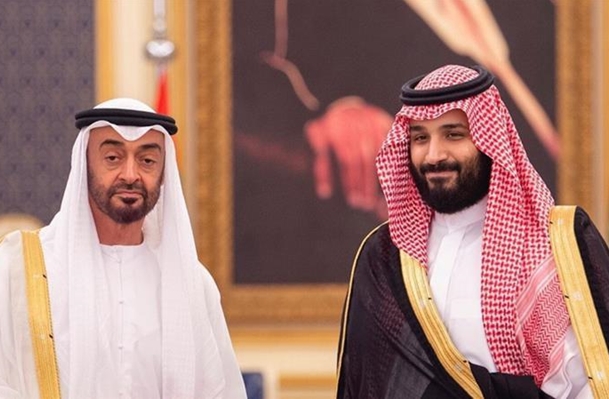While Iranian President Hassan Rouhani’s administration has always advocated dialogue with the neighbours, Saudi Arabia has taken a tough line on interaction with Iran, at least until lately.
In a speech in Sweden during his tour of Scandinavia, Iranian Foreign Minister Mohammad Javad Zarif reiterated on Tuesday that Tehran was ready to pay a price for friendly ties with the neighbours.
Relations between Tehran and Riyadh have strained over the past years after their conflicting views on regional developments, particularly on Yemen and Syria, became more noticeable.
The relations further deteriorated after a crush of pilgrims in Mina, near Saudi Arabia’s Mecca, in September 2015, which killed over 7,000 Hajj pilgrims, including 465 Iranians.
Tehran has blamed the deaths on the Al Saud’s mismanagement of the Hajj pilgrimage and criticized Riyadh for “lack of cooperation” on restoring the rights of families of the victims.
The row between Iran and Saudi Arabia escalated further in January 2016, following Riyadh’s execution of prominent Shiite cleric Sheikh Nimr al-Nimr, and a subsequent attack by outraged Iranian protesters on the Saudi embassy in Tehran, which resulted in the Arab country’s decision to sever its ties with the Islamic Republic.
However, there have been signs of a thaw in Iran’s ties with Saudi Arabia’s close ally, the United Arab Emirates, in recent weeks.
In late July, an Emirati military delegation visited Iran and signed a memorandum of understanding to promote cooperation on common border security with Iran.
Many believe that the shift in the Abu Dhabi’s policy on Iran reflects a change in the policies of its close ally, Saudi Arabia.
Moreover, Saudis have given the Iranian Hajj pilgrims a warm welcome in this year’s pilgrimage.
In interview with Fararu news website, Nosratollah Tajik, a Middle East expert and Iran’s former ambassador to Jordan, has explained how a shift in the regional situation has made Saudi Arabia and the United Arab Emirates – known as Iran’s regional rivals in the Arab world – decide to improve ties with Iran.
“Different hardware and software factors have led to such relative thaw or shift in the Saudi and Emirati policies towards Iran. The instances in the hardware arena are the issue of oil tankers in the Persian Gulf and the downing of the US drone. These have disappointed Saudi Arabia and the UAE’s hopes for a hundred percent American support for their policies against Iran, forcing them to resolve the disputes with Iran politically, not militarily,” the former Foreign Ministry advisor said.
“The other part relates to the prolonged war on Yemen. Saudi Arabia and the UAE are under pressure of the international public opinion for the crimes that Saudi Arabia has committed in Yemen, among other things,” Tajik added.
“In the software arena, I believe that we should mainly monitor the political developments in the region. The UAE’s internal disputes, Saudi Arabia’s difference with the UAE, and all of these factors force them to address their issues with Iran politically, instead of entering the military phase,” he added.
“In the UAE, the internal rifts between Sheikh Mohammed bin Zayed, the influential Emirati crown prince, and the other six emirs over Yemen and Iran have led them to the conclusion that they should prevent further damages and settle the disputes with Iran. Another reason behind the UAE’s new policy was the outflow of capital of the Iranian residents, and the UAE’s vulnerability to the outflow of capital because of its heavy dependence on foreign investment. The UAE is more susceptible to the Persian Gulf security developments than Saudi Arabia, so it is natural for it to shift its policy towards Iran more rapidly than Saudi Arabia,” he added.
“As regards the Saudi stance, there is a part relating to the Yemen war and another part is that Saudis are willing to hold the next year’s G-20 summit in Riyadh. As a result, Saudis would naturally adopt the ‘zero tension policy’ in order to portray a good image of them and demonstrate a safe picture from Saudi Arabia as the world will be watching the G-20 leaders there,” Tajik added.
The former ambassador to Jordan also commented on the future prospect of relations between Iran and Saudi Arabia and the ways to improve the ties, as cited by Zarif, saying, “We have a lot of differences. Sadly, we live in an undeveloped region; nonetheless, no country could choose its neighbour. We need to be realistic and try to achieve a mechanism on the basis of commonalities. I believe that the traditional patterns of collective security are not working anymore. We must move towards modern patterns, and preferably towards establishment of peace through economic interaction.”
“The governments are in charge of the traditional patterns of security, and since the governments in this region are suspicious about each other and have doubts and fears, we’d better exercise economic interaction and make the private sectors of countries involved in the economic interests, with which the security will be also ensured,” Tajik concluded.
